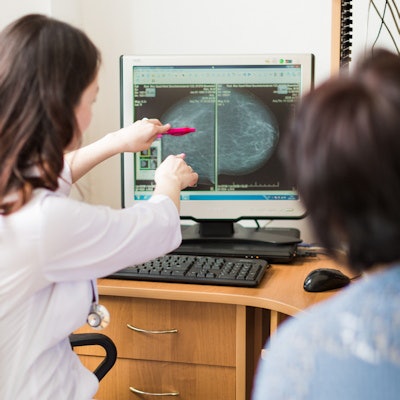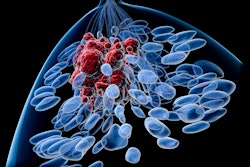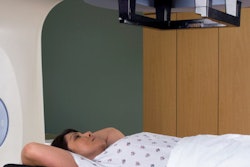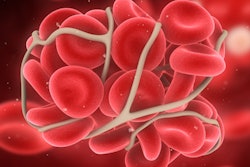
A nomogram based on radiomics and other ultrasound features of automated breast volume scanning (ABVS) images can more accurately access axillary lymph node status, according to a report published February 5 in Ultrasound in Medicine & Biology.
Researchers led by Hui Wang from Lanzhou University in China found that their combined nomogram outperformed radiomics signatures alone in noninvasively predicting lymph node metastasis in women with early invasive breast cancer.
"The constructed nomogram model has the potential to be an adjunct diagnostic tool for axillary lymph node metastasis in patients with early invasive breast cancer," Wang and co-authors wrote.
Axillary lymph node status is an important independent predictor of early invasive breast cancer and also impacts treatment guidance and prognosis. Dissection and biopsy are the standard methods for assessing such status, but the researchers noted they tend to lead to false-positives and postoperative complications.
"Therefore, to enable personalized and minimally invasive treatments, a non-invasive tool... is essential," Wang and colleagues wrote.
Nomograms are predictive models that help simplify decision-making processes by transforming complex data into visual graphs. The researchers however pointed out a lack of data for the use of ABVS images to predict axillary lymph node status.
They wanted to put their own preoperative nomogram to the test. The nomogram used for this study included four independent predictors: radiomics signature, ultrasound-evaluated lymph node status, convergence sign, and erythrocyte distribution width. The team suggested that the nomogram can predict both axillary lymph nodes with positive ultrasound features and micrometastatic lymph nodes.
The researchers took retrospective data taken between 2016 and 2020 from 179 ABVS images of women with early-stage breast cancer. They were divided into training and validation sets, with a ratio of 8:2. They also enrolled 97 ABVS images from a second center as a test set.
The team found that the nomogram had higher AUCs in training, validation, and test sets compared with using only radiomics signatures.
| Comparison between nomogram, radiomics signatures in predicting axillary lymph node metastasis for early invasive breast cancer | |||
| Dataset | Radiomics signatures | Nomogram | p-value |
| Training | 0.644 | 0.781 | 0.005 |
| Validation | 0.707 | 0.773 | 0.401 |
| External test | 0.670 | 0.828 | 0.007 |
Nomogram prediction curves were also close to the ideal curve when evaluated using correlation coefficients in the training set and the test set, the researchers reported.
They also found that the nomogram was "of greater benefit" when it came to decision curves of the training and validation sets when the probabilities were less than 0.8 and greater than 0.94, or less than 0.67 and greater than 0.87, respectively. Additionally, when the threshold probability was arbitrary for decision curves of the test set, the researchers wrote that patients benefited more from the nomogram.
Finally, the nomogram predicted that two patients with early invasive breast cancer were at risk for axillary lymph node metastasis.
The study authors suggested that using ABVS images has advantages over other imaging modalities. These include a standardized examination process, "relatively" constant parameter adjustment, and high reproducibility.
"Thus, constructing the ABVS-based radiomics nomogram might improve its generalization, facilitating its clinical application," they wrote. "The AUC of the current radiomics nomogram is conducive to the clinical application of the nomogram."




















